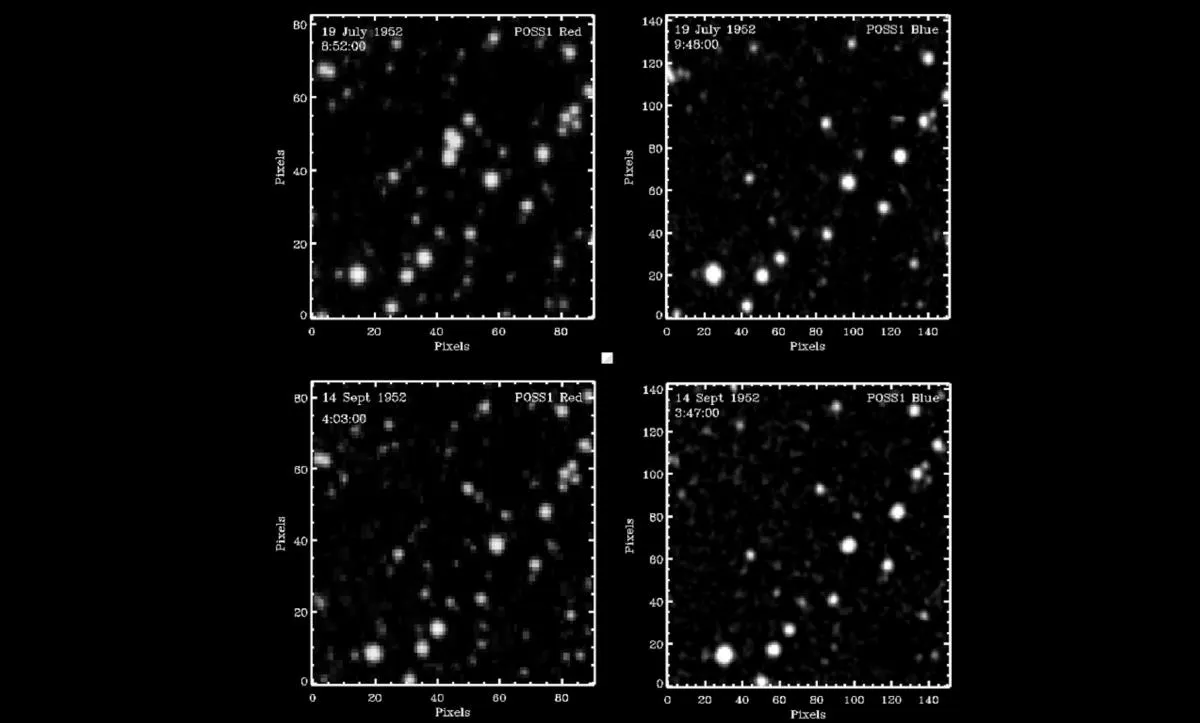
The night sky has become increasingly cluttered with debris, presenting a significant challenge for astronomers and space enthusiasts alike. A relentless shower of space junk falling out of orbit, coupled with the proliferation of SpaceX satellites, has made it difficult to observe the cosmos without interference. This constant presence of satellites poses a serious threat to the protected radio bands that are crucial for detecting emissions from celestial objects.
But what if we could turn back the clock to a time before the space race began? Researchers at the Vanishing and Appearing Sources during a Century of Observations project, known as VASCO, are doing just that. They are meticulously sifting through digitized records of the night sky to uncover anything unusual. VASCO’s primary goal is to analyze archives of astronomical photographs dating back decades, aiming to “identify interesting astrophysical targets for follow-up analysis with extreme, exotic, or bizarre patterns of variability.”
The results from VASCO have proven to be quite fascinating. In a recent survey published in the journal Scientific Reports, researchers discovered several mysterious transient objects in the night sky, dating from 1949 until the launch of the first human-made satellite, the USSR’s Sputnik, in 1957. During this period, there should not have been any human objects in orbit, making these findings even more intriguing.
These transient “star-like objects of unknown origin” were initially captured by the Palomar Observatory in San Diego. To qualify as “transient,” these phenomena must have lasted less than 50 minutes—the duration it took for Palomar to capture a single image—and cannot be explained by conventional means, such as burning asteroids or equipment issues.
In a provocative twist, the VASCO team identified a correlation between these unexplained lights and nuclear weapons testing, which saw a significant increase in activity during the post-World War II era. Remarkably, the study revealed that these transient objects were 45 percent more likely to appear within one day of an atomic test. Even more compelling was the finding of a “small but statistically significant” relationship between reports of unidentified anomalous phenomena (UAPs) and instances of nuclear weapons testing.
The research indicates a rise in transient activity by 8.5 percent for every reported UAP sighting. In their paper, the VASCO team states that these findings “provide additional empirical support for the validity of the UAP phenomenon and its potential connection to nuclear weapons activity, contributing data beyond eyewitness reports.” This research is especially captivating for those who speculate about humanity being monitored by intelligent extraterrestrial visitors, particularly regarding the development of nuclear weaponry.
However, as noted by Scientific American, there are plausible alternative explanations for the lights observed in this research. These could include radiation in the upper atmosphere resulting from atomic weapons testing, or sightings of high-altitude balloons that were utilized to monitor nuclear detonations during that period. Additionally, these lights might represent cosmic phenomena, such as gamma-ray bursts, which were captured by equipment from that era.
One thing is certain: the research is controversial. Scientific American mentions that arXiv.org, a preprint repository known for hosting a wide range of studies under scientific scrutiny, declined to accept the paper that was ultimately published in Scientific Reports. This controversy underscores the ongoing debate within the scientific community regarding the legitimacy and implications of these findings.